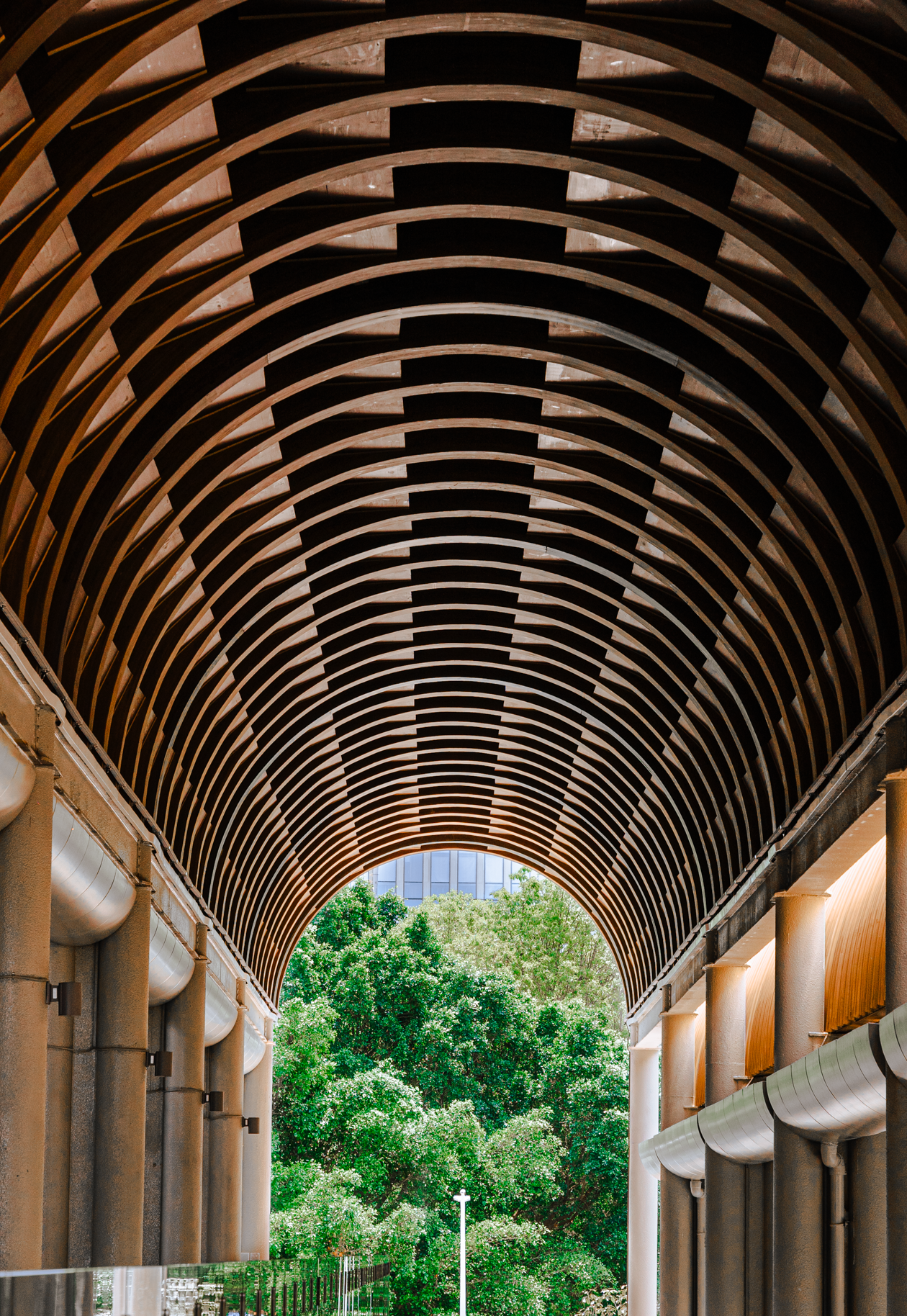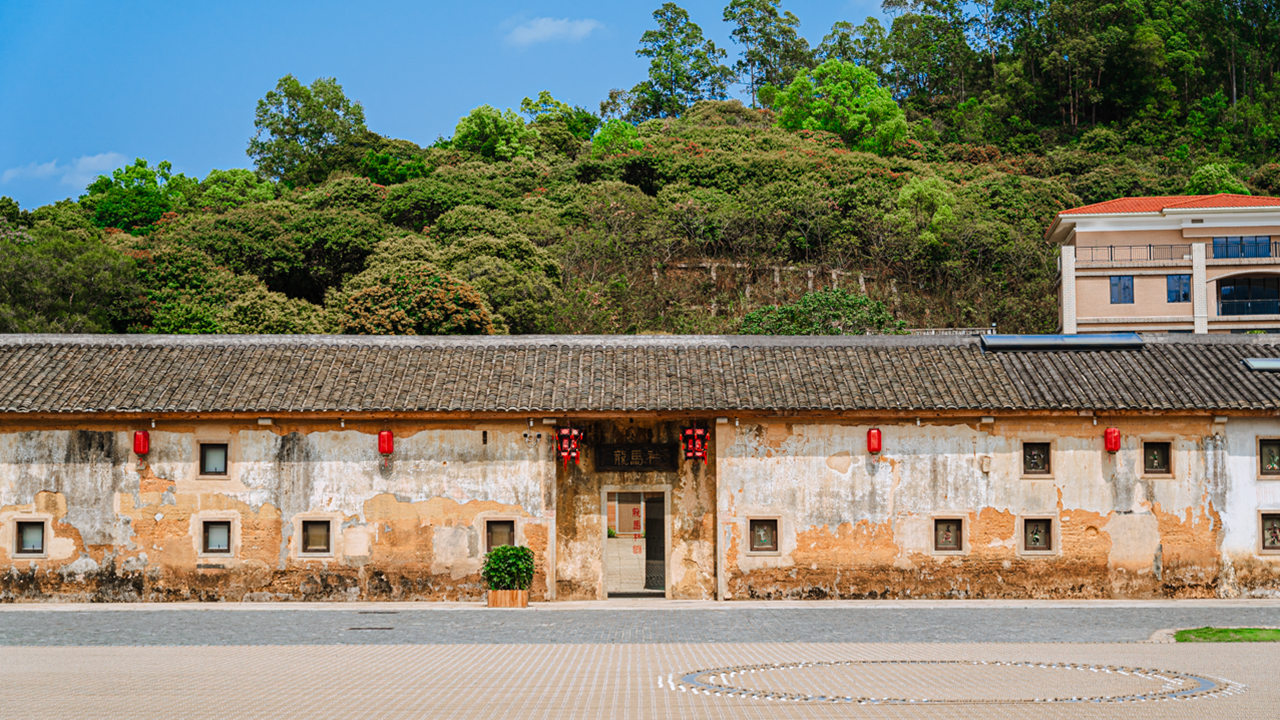Living in SZ | A different Pingshan
Writer: Claudia Wei | Editor: Lin Qiuying | From: Shenzhen Daily | Updated: 2025-04-22
With the opening of Metro Line 14, Pingshan, located in the northeastern corner of Shenzhen, has become more accessible to residents from other parts of the city. People have begun to discover its stunning landscapes beyond BYD, such as the breathtaking waterfall at the Maluan Mountain, and the scenic greenway circling around Dashanpi Reservoir. However, there are even more hidden gems that this district has to offer.
In this article, we’ll introduce our readers to a different side of Pingshan, showcasing two intriguing destinations that are well worth a day of exploration: a uniquely shaped cultural landmark, and a lesser-known ancient village located near the Maluan Mountain and the Chi’ao Reservoir. The juxtaposition of modern architecture against the backdrop of an ancient construction rich in history creates a striking contrast.
Kengzi Science, Technology and Culture Center
Located to the west of the Guangzu Park in Pingshan District, Kengzi Science, Technology and Culture Center is an important cultural infrastructure for the young district, home to world-renowned new-energy vehicle maker BYD.

An aerial view of Kengzi Science, Technology and Culture Center. Photos from WeChat official account "深圳微时光"
The recently opened new urban landmark houses various public facilities such as the culture hall, the science museum, a library and a bookstore in two independent buildings.
Featuring a novel design that incorporates ancient cultural elements with modern architecture perfectly, the appearance of the center is reminiscent to a Hakka round house, the traditional dwellings of the Hakka people in southern China. Their rooftops look like two giant egg rolls if viewed from above.

The wooden archway on the center's second floor.
The second floor features an open-air space with an impressive wooden archway above. Currently, the science museum and the library are not yet open to the public, except for a small exhibition. The culture hall mainly focuses on public cultural training, offering a number of non-profit courses in dance, singing, handicrafts and painting that cater to both children and adults. These free-of-charge courses make a fantastic opportunity for Pingshan residents to access the art.
The center is connected to the Guangzu Park, formerly known as Kengzi Park, allowing for a leisurely and enjoyable visit that combines touring exhibitions at the center with a stroll in the park.
Transportation: Metro Line 14 to Kengzi Station (坑梓站), then take a bus or walk about 1.6 kilometers
Changshou Village
Nestled at the foot of Maluan Mountain and adjacent to the Chi’ao Reservoir, the Changshou Village is particularly serene, often filled with the sounds of birds and insects, which is a sharp contrast to the urban villages in downtown Shenzhen.

An aerial view of Changshou Village.
The village is home to an ancient Hakka round house that has a history of over 260 years. After a four-year renovation completed last year, the house has transformed into a small theater with a capacity of 300 people. Renowned actor Zhang Guoli worked with Longma Society to establish the Longma Society Changshou Drama Community here, often hosting theatrical performances.
The renovation of the other round houses in the village was minimal, retaining some of their broken walls that reveal the passage of time while still fitting harmoniously into the surroundings. The central plaza, reportedly originally used for storing debris after a building collapse, has been recreated a lively space featuring stone benches.
As in other traditional Hakka settlements, there is a typical semi-circular water pond in front of the round houses in the village. The water pond traditionally serves multiple purposes such as fetching water, doing laundry and fire prevention, as well as providing aesthetic appeal and fulfilling feng shui principles.
The water pond in the village has been creatively turned into a “soft plaza,” characterized by a rope mesh structure stretched across the surface of the water, resembling a large trampoline. The unique setup allows both children and adults to walk and gently, creating a highly interactive and inclusive public space that brings a lot of fun.

An old house in Changshou Village.
Official statistics show that Pingshan has 114 immovable culture relics within its 166 square kilometers, among which 102 are related to Hakka culture. These Hakka elements have become an integral part of Shenzhen’s cultural identity.
Transportation: Metro Line 16 to Dongzhong Memorial Hall Station (东纵纪念馆站), then take bus No. M575 or 964 (towards Chi’ao) to reach the entrance of the village